Contents
The outcast from the Peking breed – the Bashkir duck was obtained as a result of an attempt to improve the Peking breed. When colored individuals began to appear in the Pekinok herd, they were separated and began breeding in themselves. The result was a new breed with pure Peking duck bloodlines – the Bashkir colored duck.
Breed description
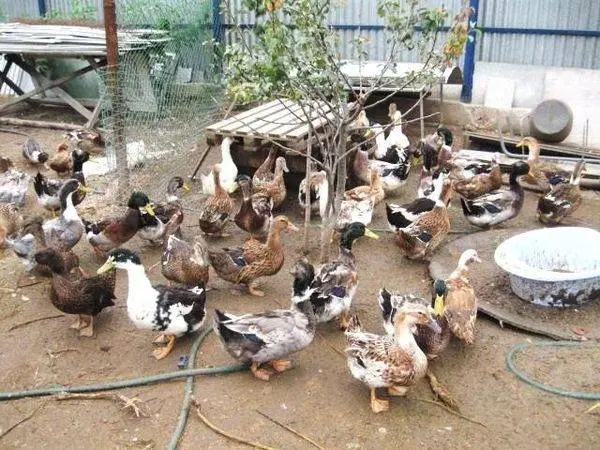
The characteristics of the Bashkir duck, its advantages and disadvantages are similar to the Peking breed. Drakes weigh 4 kg, ducks from 3 to 3,5 kg. For a meat breed, they have a fairly high egg production, about 120 eggs per year weighing from 80 to 90 g. A really useful acquisition from a duck of the Bashkir breed is its frost resistance, which is useful in conditions and which Peking ducks do not differ in.
The body of the ducks is tightly knitted, massive. Able to withstand 4 kg of the weight of a drake, the paws are powerful, with a thick bone, widely spaced.
The advantages of the breed include:
- resistance to low temperatures;
- high yield of ducklings from hatching eggs;
- fast growth;
- resistance to stress;
- high immunity;
- unpretentiousness to feed and conditions of detention.
Although there are statements on the net that the meat of the Bashkir duck is less fatty than that of the Beijing duck, this is not so. According to duck breeders who have tried to breed both breeds, the technical characteristics of both breeds are the same. Except cold hardiness. However, if it were not necessary to develop a breed of ducks resistant to cold, there would be no attempt to improve the Peking breed. And such a kind of Peking as the Bashkir colored duck simply would not have been born.
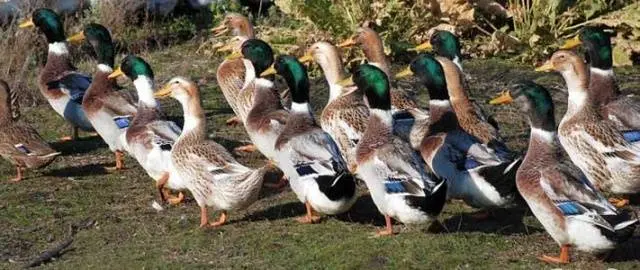
The disadvantages of the Bashkir duck include:
- unwillingness to sit on eggs, despite the advertising of sellers;
- voracity;
- obesity, to which both Beijingers and Bashkirs are prone, against the background of a tendency to overeat;
- loudness.
All mallards are distinguished by the latter, so there is only “understand and forgive”. Or start an indo.
In this photo, the blue favorite, not the Bashkir breed of ducks
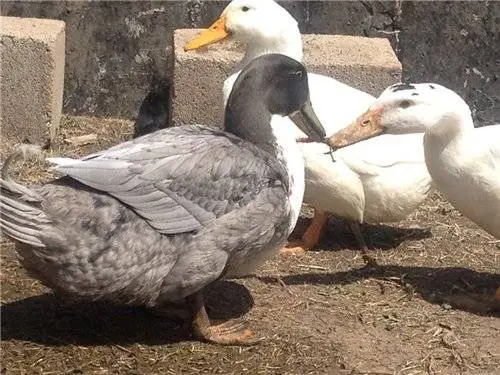
However, at the Blagovarsky factory they also brought out a favorite of a different color – red. This variety of ducks has a brick-colored feather. Otherwise, they do not differ from the blue favorite and are not an old breed of Bashkir ducks either.
The standard color of a real Bashkir duck is piebald. Bashkir ducks can be black and piebald (with a white chest) and piebald based on the khaki color.
In the photo, a duck of the Bashkir breed of piebald color based on khaki
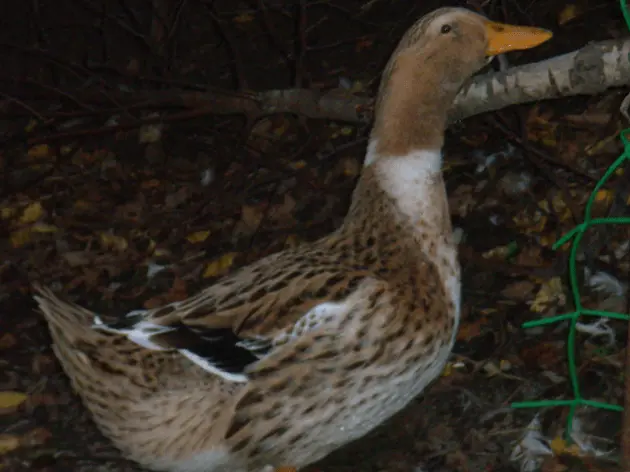
There are no Bashkir ducks of white color, and this can also be counted among their minuses, since, according to the observations of farmers, carcasses of grayish ducks are sold poorly. Worse than the carcasses of white Peking ducks. But live ducklings, on the contrary, are in demand more than Beijing ones. But they take them not for industrial breeding, but for themselves.
In the photo you can clearly see the standard colors of both black ducks and khaki.

The color of the beaks depends on the color of the feather. Piebalds based on khaki have beaks the same color as wild mallards: drakes with a green tint, ducks yellow or brown-yellow. Black white-chested beaks are black.
Keeping ducks
Although Bashkir ducks are undemanding to the conditions of detention, doing nothing at all to equip them will also fail. In particular, this breed of duck needs a lot of water. For drinking, they must be provided with free access to fresh clean water. And, if possible, arrange a reservoir for them.
For wintering, ducks arrange a deep bedding on the floor, you can’t put a bath in the barn, all the water will be on the floor. Drinkers in the barn are also needed, from which the ducks will not be able to pour water, i.e. nipple.
Ducks trample down any bedding material very strongly, polluting it from above with liquid droppings. As a result, a wet litter is obtained from above, filled with droppings, on which ducks trample, and completely dry litter material below, since due to strong tamping, moisture cannot penetrate into the lower layers.

A different situation is possible only if there is a bath in the room. Then the ducks will make a swamp there.
Feeders for ducks can be arranged as bunkers, but due to the tendency of birds to become obese, only a daily portion of concentrates can be placed there.
Breeding Bashkir ducks
Bashkirs do not sit on eggs, as advertising claims, so when ducks begin to lay, their eggs are collected for further laying in incubators. When feeding ducks with laying hen food, the laying of ducks can be accelerated, since the start of laying usually depends on the length of daylight hours. The dependence on air temperature is much less.
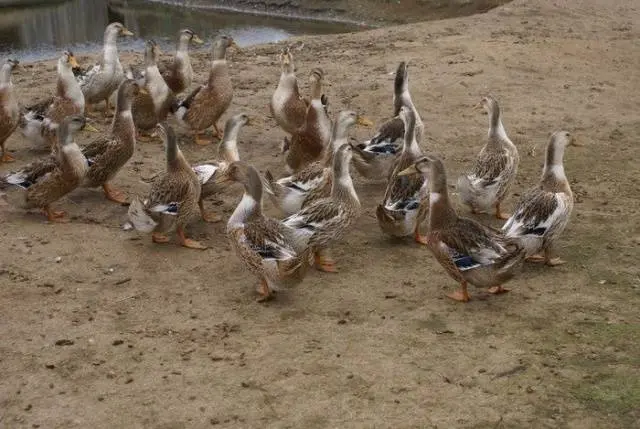
Therefore, in order for ducks to lay as early as possible, they are transferred to laying hens. In this case, even without special lighting in the poultry house, the duck will begin to rush already in March. True, it may turn out that she will start laying eggs right on the snow.
To obtain an incubation egg, each drake is determined by 3-4 ducks. With more, many eggs will remain unfertilized.
The physiology of waterfowl is such that the maximum number of fertilized eggs is obtained by mating a couple in water. This happens because the ducks have a body flattened from the back and abdomen for better holding on the water and short legs, they do not need long ones for rowing. But because of these features, it is not very convenient for them to mate outside the reservoir.
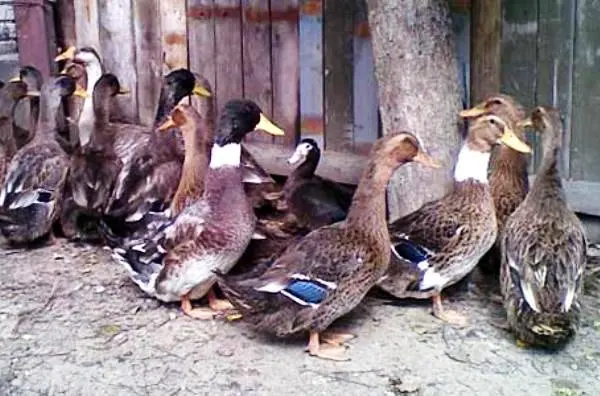
Duck eggs are surprisingly even in size. They may vary in size, being from different ducks, but the same bird will produce eggs of the same size.
It is better not to lay eggs that are too small in the incubator, and discard the duck that carries them from breeding. The eggs of the Bashkir duck are incubated in the same way as any other.
At the same time, there is such a moment that ducklings are often better hatched under hens. If there are ducks of another breed that sit well on eggs, future Bashkirs can be put on them. It should be borne in mind that if the duck has sat down, then, hatching the chicks, it practically does not leave the nest. Therefore, future hens are just not recommended to be limited in feed. Even when they become obese, they will lose twice as much weight when hatching eggs.
Eggs under hens can be tested in the same way as in incubation with a hand tester. At the beginning of incubation, the duck will run away from the nest, while scolding the owner. At the end of the term, the hen sits very tightly on the eggs and will fight when trying to take the egg.
Leaving the nest at the beginning of incubation to feed, the mother duck always tries to cover the eggs. Sometimes she does it just for the sake of appearances, as in the photo, and sometimes she closes it so that the eggs are not visible under the layer of grass and fluff.
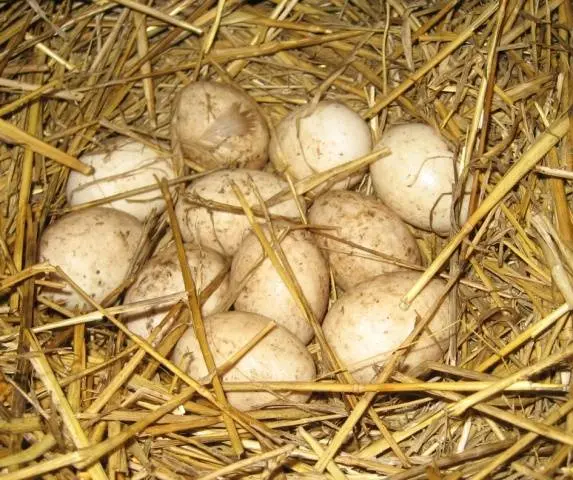
Unfortunately, it is undesirable to lay duck eggs under a chicken or turkey. Duck eggs require incubation at 28 days, and chicken eggs are enough for 21. A chicken can leave a nest with hatching ducklings. A turkey has the same incubation period as a duck, but the shell of duck eggs cannot withstand the claws and weight of a turkey.
How many eggs to lay under the hen should be decided depending on the size of the future “mother”. The bird is able to incubate 10-17 of its own eggs. If the eggs are large and the foster mother is small, about 10 eggs are laid.
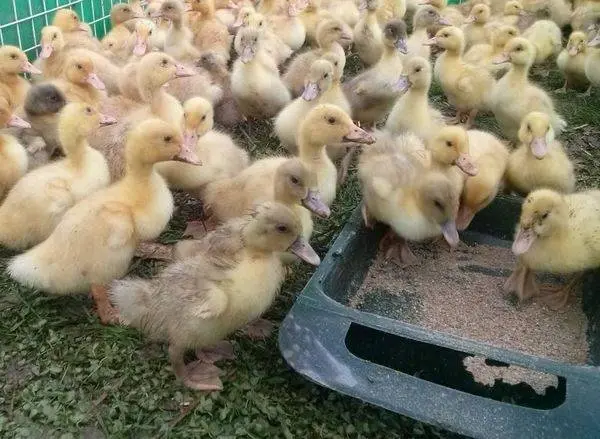
The hatched ducklings are raised in the same way as other young ducks. If it is possible to give them plankton from water bodies, you can feed them with such food. But it must be fresh. Since these conditions are very difficult to meet, the ducklings are fed with the usual starter feed.
Feedback from owners of Bashkir ducks
Conclusion
At the same time, the buyer will never be told which line of the Bashkir duck he takes.
The Bashkir breed, as a meat breed, is superior to the Beijing one when kept in conditions. But it requires a properly composed diet and care when buying ducklings or hatching eggs.









